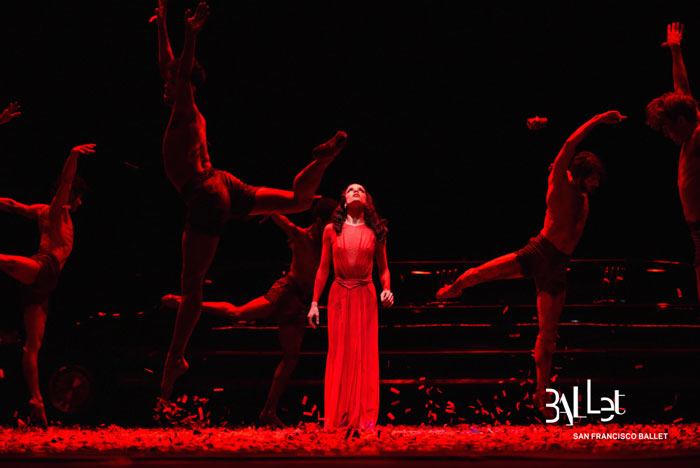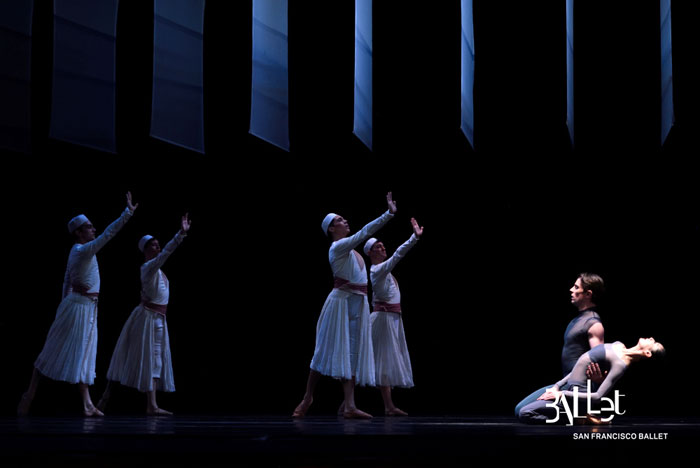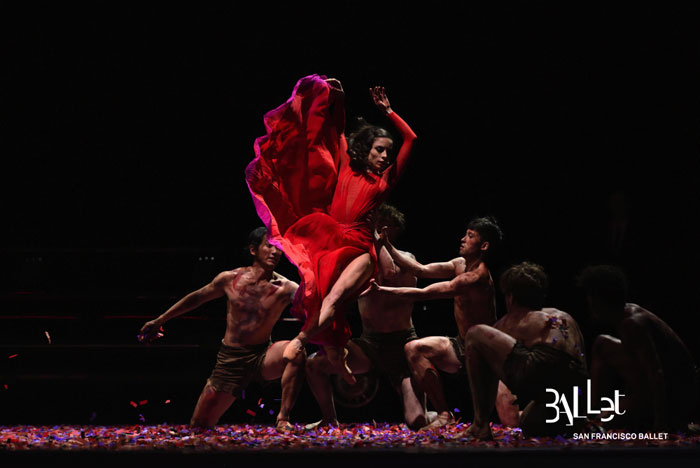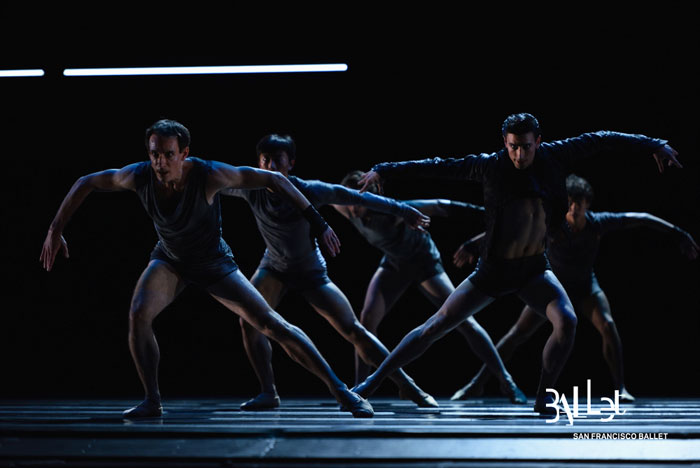
San Francisco Ballet’s second triple bill of the week takes the title Contemporary Voices, and it’s just that – a program which gives a voice to three contemporary choreographers – Yuri Possokhov, Arthur Pita and Liam Scarlett, all of whom created the featured works specifically for the Company. Possokhov’s Fusion and Scarlett’s Fearful Symmetries were both given their world premiere performances by San Francisco Ballet in previous seasons, and this year’s world premiere is Pita’s Salome.

Fusion is a work in which contrasting expressions of Eastern and Western cultures come face to face, where an interpretation of Eastern spirituality integrates with the movements of Western contemporary jazz. Possokhov’s inspiration came, in part, from watching a performance by a group of Whirling Dervishes – dervishes being members of a religious sect which originated in Turkey in the 13th century, who devote themselves to a life of spiritual modesty and meditation, and are associated with a ritual dance which involves highly stylized whirling movements.
This mood of contrasts is also reflected in the score, as it moves from Rahul Dev Burman’s Aaj Ki Raat – taken from the soundtrack of one of his Bollywood films – and arranged by Osvaldo Golijov – to three pieces by contemporary British composer, pianist and conductor, Graham Fitkin – Hard Fairy, The Cone Gatherers and Bed.

Judging by the impressive list of productions, achievements and awards which are associated with the name Arthur Pita – in dance, opera, musicals, plays and film – it was only going to be a matter of time before San Francisco Ballet commissioned a work from him, and his Salome, promises to be something of a revelation. South African-born Pita – who trained in Johannesburg before completing his studies at the London Contemporary Dance School – has a well-known affinity for the surrealist style of film director David Lynch, one of the sources of inspiration for his (very) loose adaptation of the Biblical story of Salome. Benjamin Freemantle – a member of the corps de ballet – describes Salome as “something along the lines of ballet theatre”. This, he says, is most obvious at the start of the ballet when “Arthur really takes the time … to set the mood and to showcase to the audience what story he wants to tell”.

Freemantle refers to ‘Salome’ as “a dark, sinister and eerie ballet with explosions of color. Quite the juxtaposition between the two,” he admits “but it makes for an amazing effect onstage”. It’s also “unusual and a little off-the-grid from what the Bay Area audience usually sees from us,” he adds, “…. not something SF Ballet would typically do, but that being said, we are always pushing the envelope and bringing in new ideas and choreographers from all over. So, this is actually typical of us.”
The score is an original composition by British musician and composer Frank Moon, with whom Pita has collaborated on a number of occasions, as he has with Brazilian-born designer Yann Seabra, whose stage setting is dominated by a large black stretched limousine. Expect something much more contemporary, and very different, from the image which Salome normally conjures up.

From the moment the curtain rises on Liam Scarlett’s Fearful Symmetries, you have a sense that something intriguing is about to take place. The stark background of vertical and horizontal neon lights in bright white sets the mood for a menacing urban location, compounded by the relentless rhythms of John Adams’ pulsating score. Both ballet and music take their title from the “fearful symmetry” referred to in the first stanza of William Blake’s 1794 poem, The Tyger.
With the dancers in uncompromising costumes of black and steel-gray, and no pointe work at all, there’s a sense of apprehension in Scarlett’s highly physical, athletic work – he describes it as “feral” – but one which nevertheless has a thread of sensuality running through it. The mood is similar to that created by Jerome Robbins for his warring gangs in West Side Story, and not unlike the undercurrent of fear running through The Rite of Spring. It’s only at the end – in the ‘after the storm moment’ – that Scarlett gives us a complete contrast – a quietly elegant, and very classical, pas de deux.
San Francisco Ballet, with the San Francisco Ballet Orchestra, led by Martin West, presents Contemporary Voices at the War Memorial Opera house from March 9 to 19. For more information, and for tickets, visit the San Francisco Ballet website www.sfballet.org.
Sources:
San Francisco Ballet program notes – by Cheryl A Ossola
Artists’ websites
Whirling Dervishes in the Islamic Tradition
